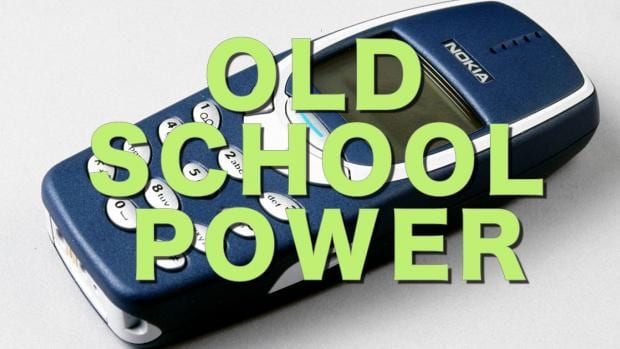In the space of 20 years, smartphones have taken over the world. Billions of people use them every day. But what were the phones that started it all? Let’s take a look back at the history of mobile phones…
A LOT can happen in 40 years. But when it comes to technology, 40-years is like going back to the days of Moses or the Roman Empire. Case in point: the mobile phone –– and, more recently, the rise of mobile internet communications, social networks, and super-fast internet.
It was a long road getting here, but now we live in a world where our phones are more powerful than some laptops! It’s crazy when you think about it, right? I mean, half of the phones inside our Best Android Phone Guide have more RAM than my mum’s laptop! You now have 5G to consider too.
But what were the phones that made it happen? How did we get from the Nokia 3310 to the iPhone 5s (the world’s first 64-bit smartphone)? Who were the pioneering brands that made today’s handsets possible? And which phone, out of the thousands launched since the 1980s, was the most important? Answer: there have been quite a few.
But first: a history lesson.
History of Mobile Phones
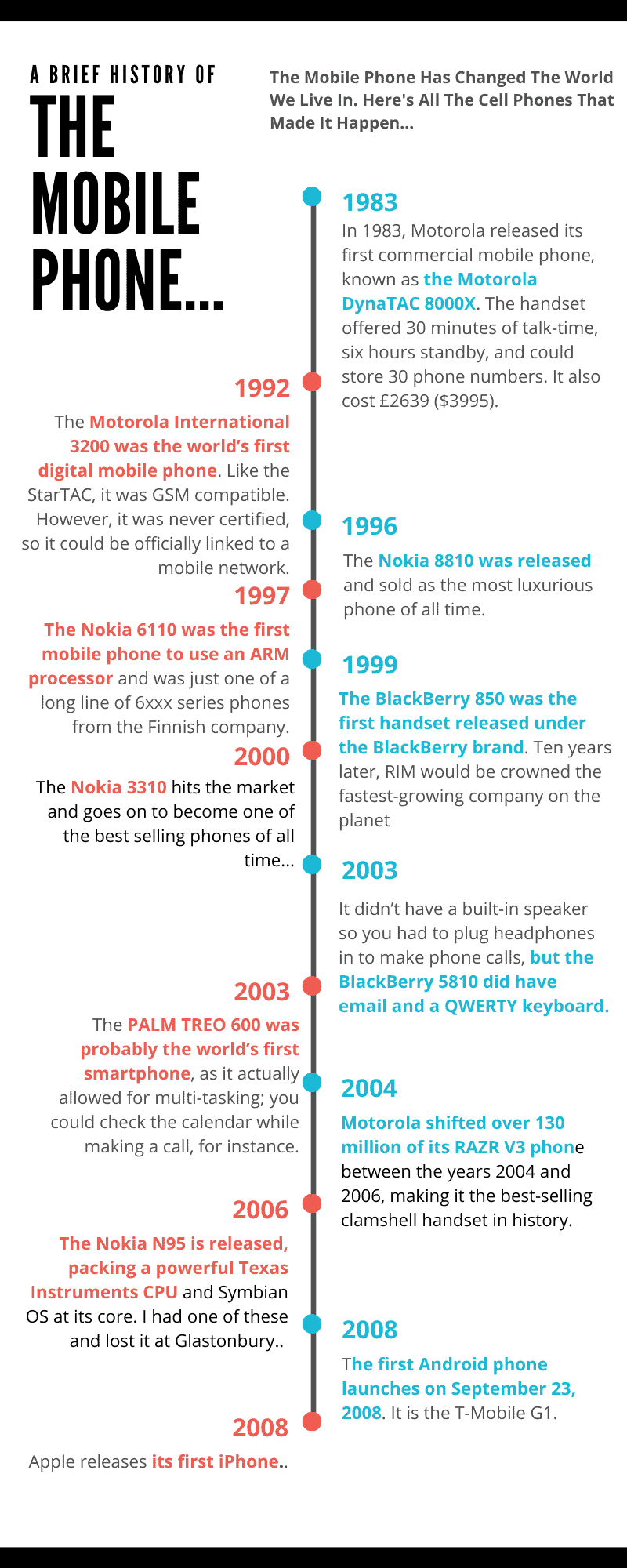
The First Cell Phone…
The world’s first mobile phone call was made on April 3, 1973, when Martin Cooper, a senior engineer at Motorola, called a rival telecommunications company and informed them he was speaking via a mobile phone.
The phone Cooper used – if you could call it that – weighed a staggering 1.1kg and measured in at 228.6x127x44.4mm. With this prototype device, you got 30 minutes of talk-time and it took around 10 hours to charge.
However, the concept of smartphones was first envisaged by Nikola Tesla WAY back in 1926 – he basically predicted iPhones, the internet, and our modern telecommunication-powered world.
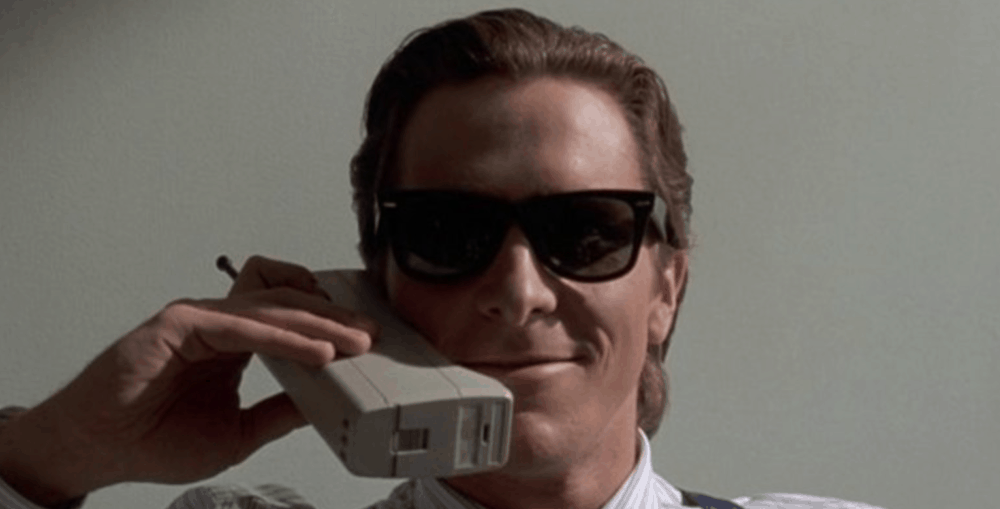
First Portable Phone
In 1983, Motorola released its first commercial mobile phone, known as the Motorola DynaTAC 8000X. The handset offered 30 minutes of talk-time, six hours standby, and could store 30 phone numbers. It also cost £2639 ($3995).
In the very early days of the mobile space, handsets weren’t designed with consumers in mind. You’d need a couple of thousand pounds to get hold of one, and even then performance wasn’t great.
Back then, mobile phones were designed with the likes of Gordon Gecko in mind, businessmen-types that drove big Jags and flew Concord. Not your average Joe. And these phones weren’t what you’d consider “portable” either.
Even at the start of the 1990s, this was still the case despite Nokia and NEC entering the fray. Nokia’s first ‘handheld’ mobile phone, the Mobira Cityman 900, launched in 1989 and weighed just 800g – a huge improvement over 1982’s 9.8kg Mobira Senator model.
1990 to 1995 represented an upward swerve in design and portability, with mobile devices (cell phones) gradually starting to appear in the hands of average consumers for the first time.
When Did Flip Phones Come Out?
Of all the major innovations back in the early days of cell phones, it was perhaps the advent of flip phones that had the biggest impact on consumers.
The first flip phone to come out was the Motorola StarTAC; it was released in 1996 and, thanks to its small and portable size, was one of the most popular cell phones of its time.
In fact, the Motorola StarTAC was so popular it was placed in the number six spot on PC World’s Greatest Gadgets of The Past 50 Years. During its time on market, Motorola shifted around 60 million StarTAC phones, making it one of the most popular early cellphones by a mile.
When Was The Flip Phone Invented?
The first actual flip phone, however, was invented in 1989. It was called the MicroTAC, and it was the direct predecessor to Motorola’s StarTAC phone.
The MicroTAC featured a semi-clamshell design, whereby the mouthpiece portion of the phone would “flip” down when the user was taking or making a call. Unlike the StarTAC, its buttons and screen were still displayed when, hence the term “semi-clamshell” design.
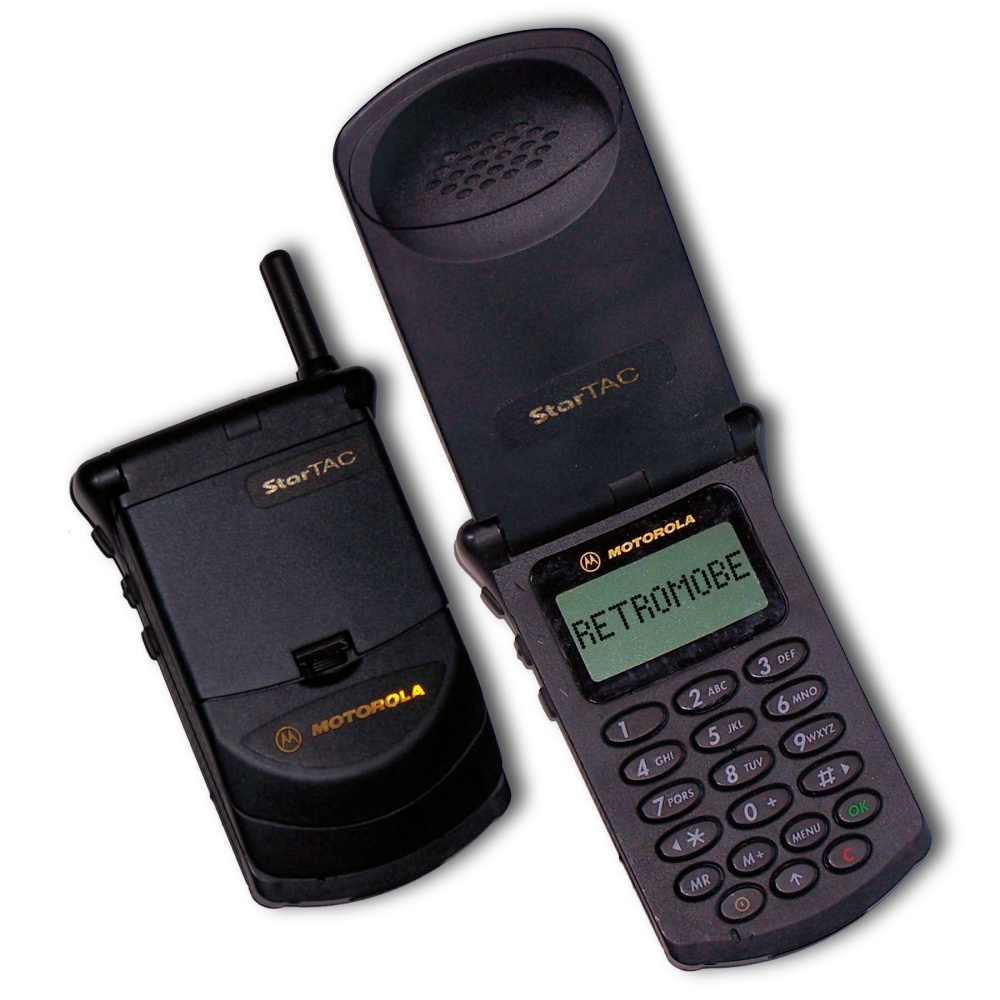
The MicroTAC was a Motorola phone too, and it picked up where the Motorola DynaTAC left off, shaving off pounds in weight and featuring a vastly more futuristic design. But the Motorola DynaTAC was an important step towards the world’s first flip/clamshell phone.
Without the Motorola DynaTAC and the MicroTAC, we wouldn’t have had the StarTAC. And without the StarTAC, the idea and popularity of cellphones might never have caught on with consumers, so, yes, we do owe a lot to Motorola and its innovative ways back in the early 1990s.
Keep in mind that these phones were not cheap, either – even by today’s standards. The MicroTAC, for instance, retailed for over $2000 when it first came out.
First Nokia Cell Phone
You can’t really talk about cell phones without mentioning Nokia because, well, without Nokia, we probably wouldn’t have much a phone market today.
And Nokia’s role in the growth of the cell phone market really cannot be understated. Neither can its rapid rise as a company, especially given its chequered and rather gloomy history.
For instance, in 1996, Nokia’s revenue was around $6.5 billion. Most of it derived from the company’s sole focus: telecommunications. By 2001, Nokia’s revenue had jumped to a staggering $31 billion. Between 2001 and 2012, Nokia was the biggest phone maker on the planet.
As for Nokia’s first cell phone, that’d be the Mobira Cityman 900. Released in 1987, the Cityman 900 was developed and released in conjunction with Mobira. The phone weighed 760g and measured in at 183 × 43 × 79 mm – it was a hulking monster.
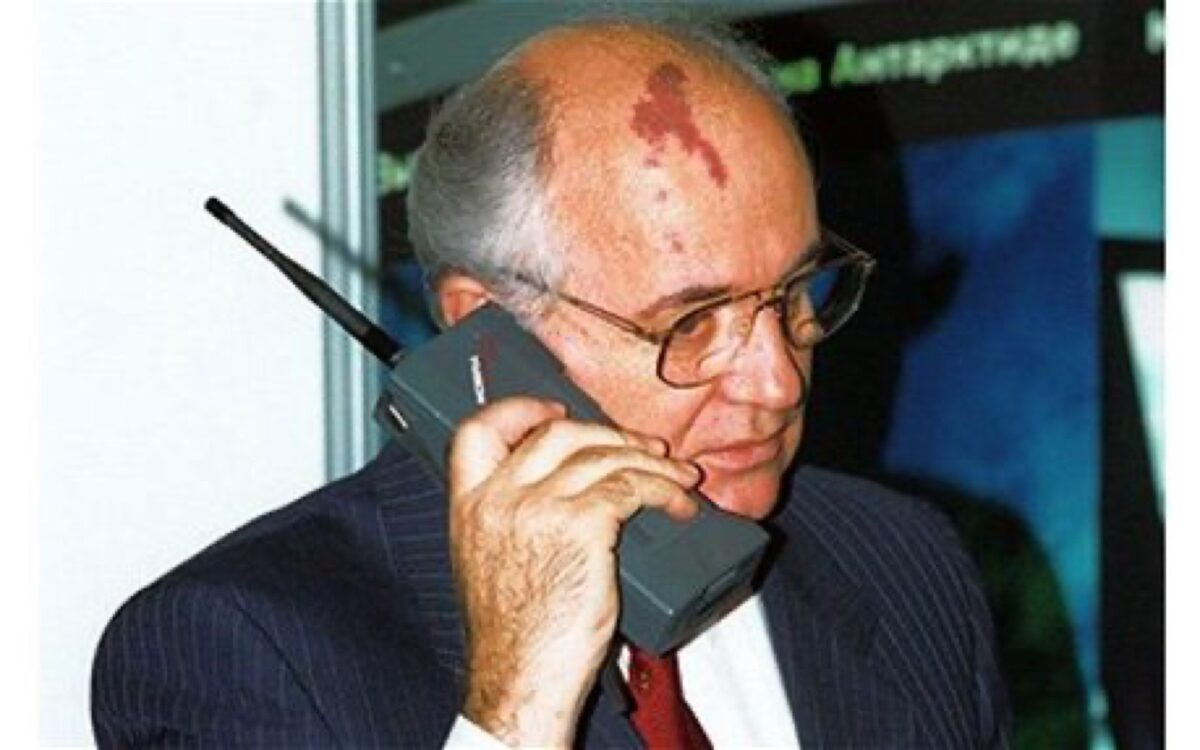
In Finland, Nokia’s native market, the Mobira Cityman 900 was often referred to as the “Gorba” because Mikhail Gorbachev, the then General Secretary of the Communist Party of the Soviet Union, was fond on using one to take his calls.
The Gorba was a monster of a phone though, weighing a ton. And it was only designed to work on the NMT 900 network. The Mobira Cityman 900 also made its Hollywood debut in 1987’s Lethal Weapon too, where it can be seen in use in several scenes.
The Mobira Cityman 900 was the first Nokia phone, but it was not the phone that Nokia built its empire on. The most popular Nokia phones were yet to come. And these phones were tiny in comparison to the Mobira Cityman 900 – orders of magnitude smaller.
And once cell phones, notably Nokia cell phones, became truly portable – meaning, they’d fit in your jeans pocket – this was when things really took off.
Starting in and around 1992 with the release of Nokia’s first mass-produced phone, Nokia 1011 which could send and receive SMS messages, make calls, and store up to 99 phone numbers, things really started to take off with cell phone adoption.
And Nokia’s supplychain was their to meet demand; it produced and designed new cell phones at a dizzying rate, generating tens of millions of sales per quarter. And this trend continued from the early 1990s right up the release of the first iPhone and the first Android phones.
By the late-1990s, mobile devices were fast becoming the norm thanks to the following handsets…
1989 – MOTOROLA MICROTAC 9800X
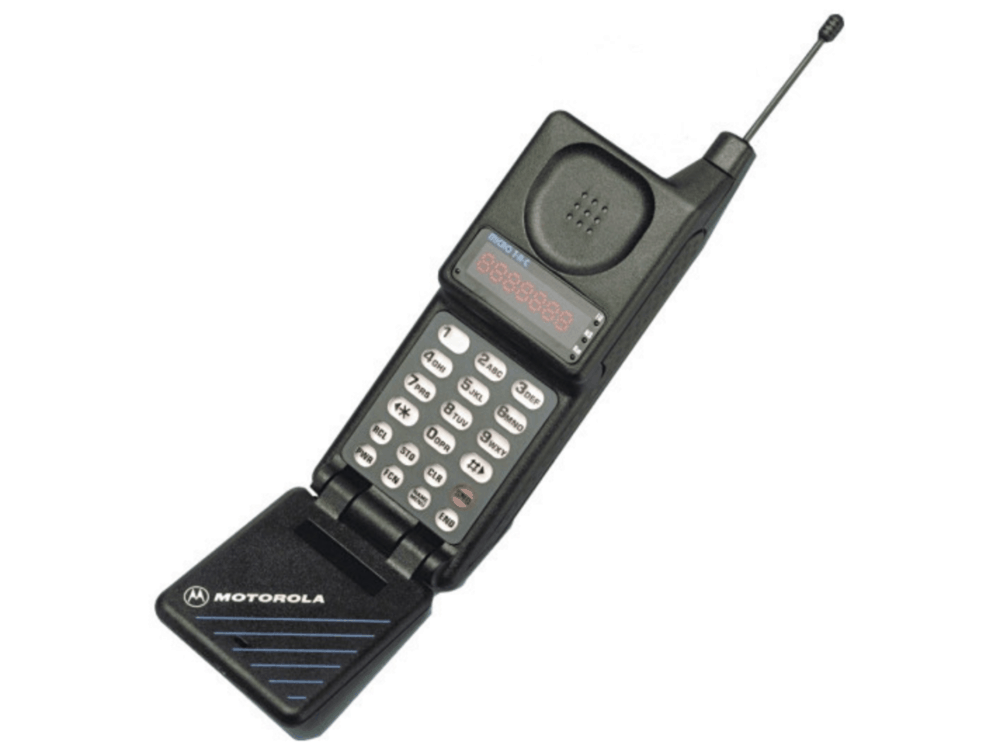
The Motorola MicroTAC had a pretty long shelf life; it was first introduced in 1989, but then went through a few changes that moved it from an analog phone to a GDM-compatible handset in 1994.
It was eventually succeeded by Motorola’s StarTAC in 1996, which was one of the first “true” mobile-capable phones ever released.
1992 – MOTOROLA INTERNATIONAL 3200
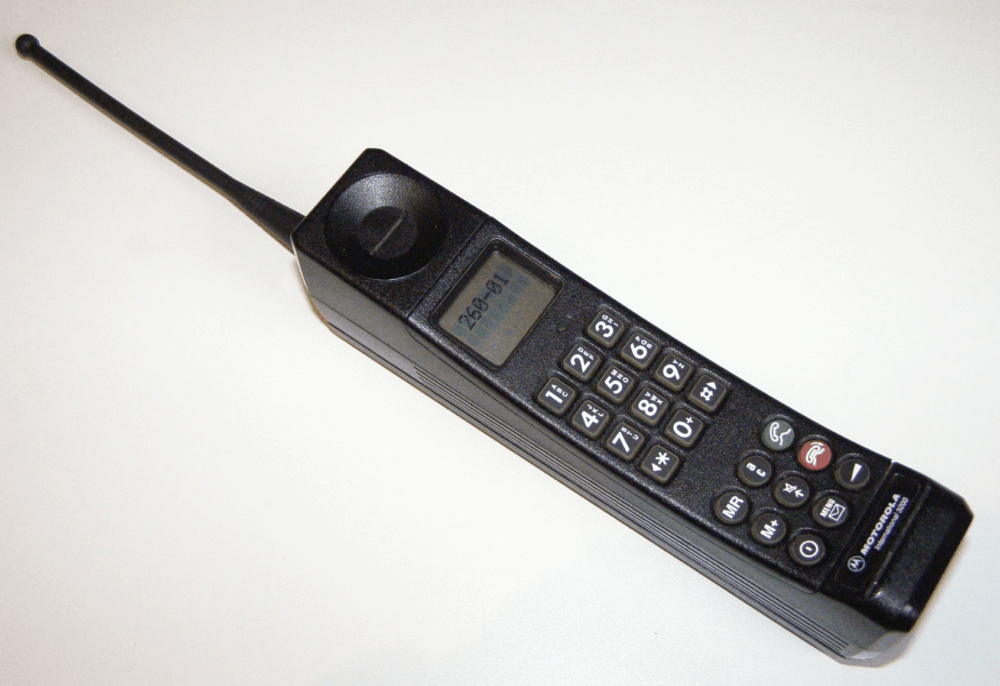
The Motorola International 3200 was the world’s first digital mobile phone. Like the StarTAC, it was GSM compatible. However, it was never certified, so it could be officially linked to a mobile network.
The phone itself, which is still available in some places, as a collector’s item, will actually work on the 900MHz network. You’ll just have to track one down, and that will probably be pretty tricky (and kinda expensive too!).
1992 – NOKIA 1011
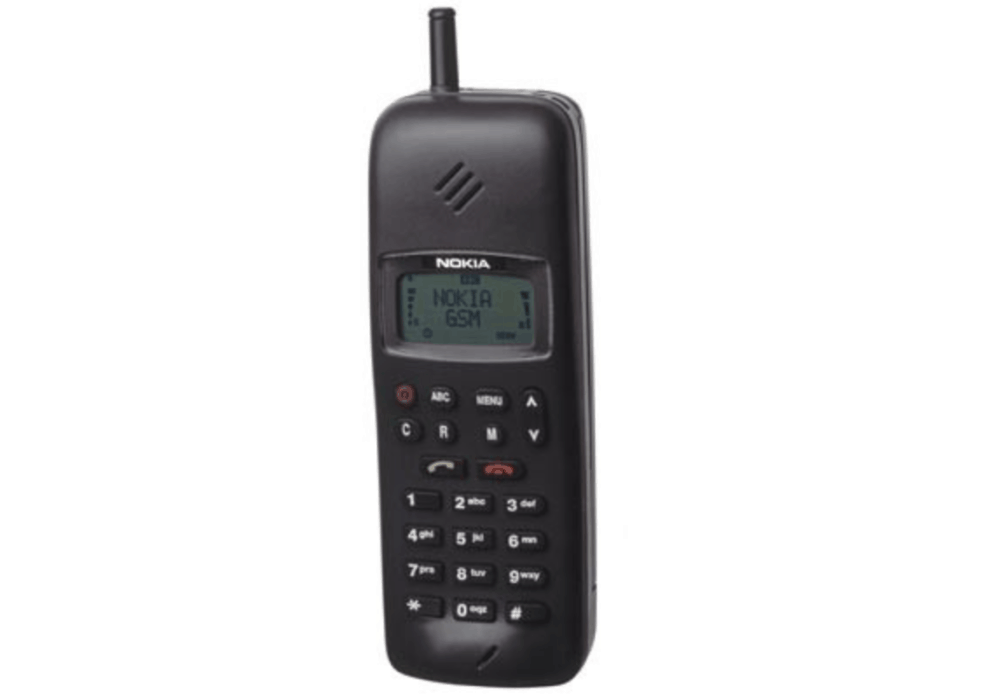
The Nokia 1011 was the world’s first mass-produced mobile phone. It could store 99 numbers and was originally released in November 1992.
Because of the technology inside the phone, the price of the Nokia 1011 was exceptionally high – around €1796 in today’s money! That’s almost as much as the Samsung Galaxy Fold – a phone that folds and has laptop-grade specs!
The Nokia 1011 was able to send and receive SMS messages, making it the world’s first SMS-capable phone.
1993 – BELLSOUTH/IBM SIMON PERSONAL COMMUNICATOR
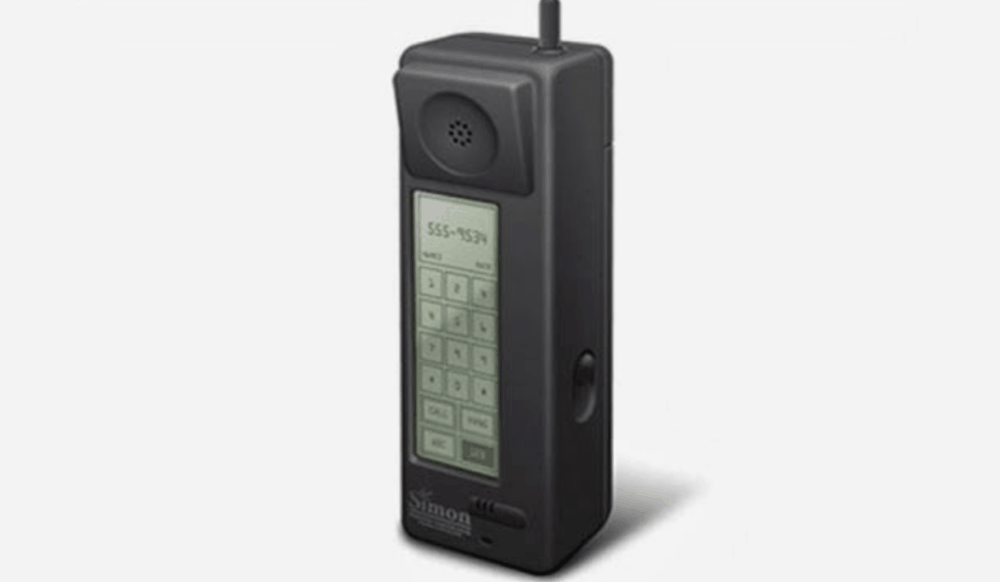
The IBM Simon was built by IBM and was one of the first instances of a head held, touchscreen device. Originally released in 1994, the IBM Simon went on to sell around 50,000 units total, between 1994 and 1995.
The battery on this bad boy, however, only lasted an hour! And you thought your iPhone was bad…
1996 – Nokia 8810 (AKA: “The Matrix Phone”)
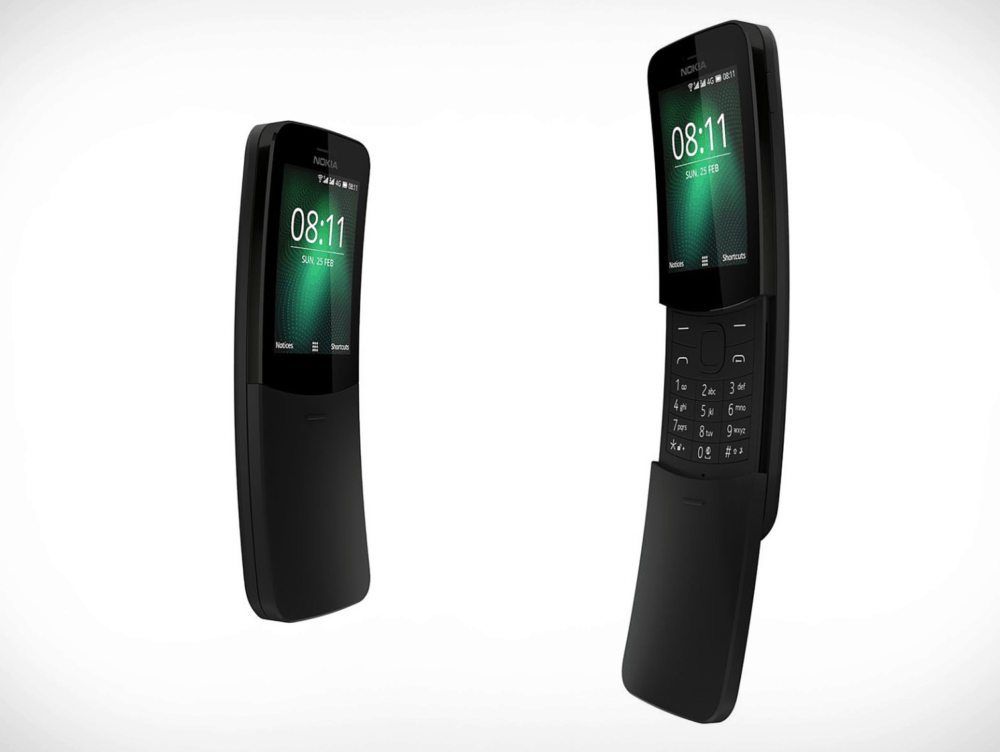
The Nokia 8810 was designed to be the most luxurious phone of all time. Nokia pulled out all the stops with this one, adding in the world’s first internal antenna and support for 250 contacts.
The 8810 would also connect to early 2G networks, and it was also the phone used by Neo’s crew in the blockbuster film, The Matrix, making it a true classic in every sense of the word.
1996 – NOKIA 9000 COMMUNICATOR
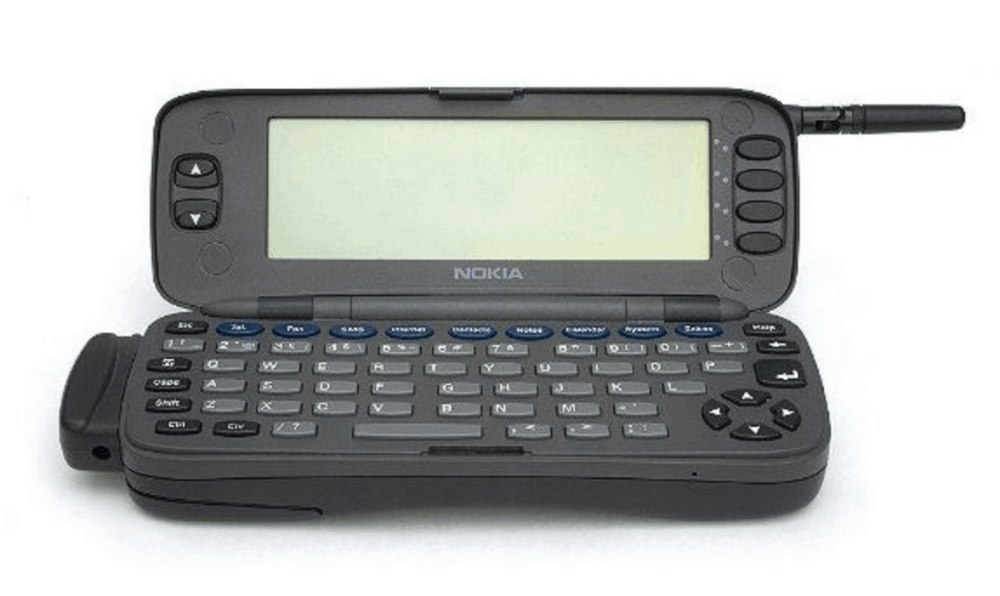
The Nokia Communicator 9000 is basically the world’s first smartphone, as it ran on an Intel 24 MHz 1386 CPU and also had 8MB of RAM. It was heavy too, and it had a full QWERTY keyboard.
It could do email, texts and make calls – three things that hardly any of the competition could manage in the mid-90s.
The Nokia Communicator cost £1000 when it was first released in the UK.
1997 – Nokia 6110
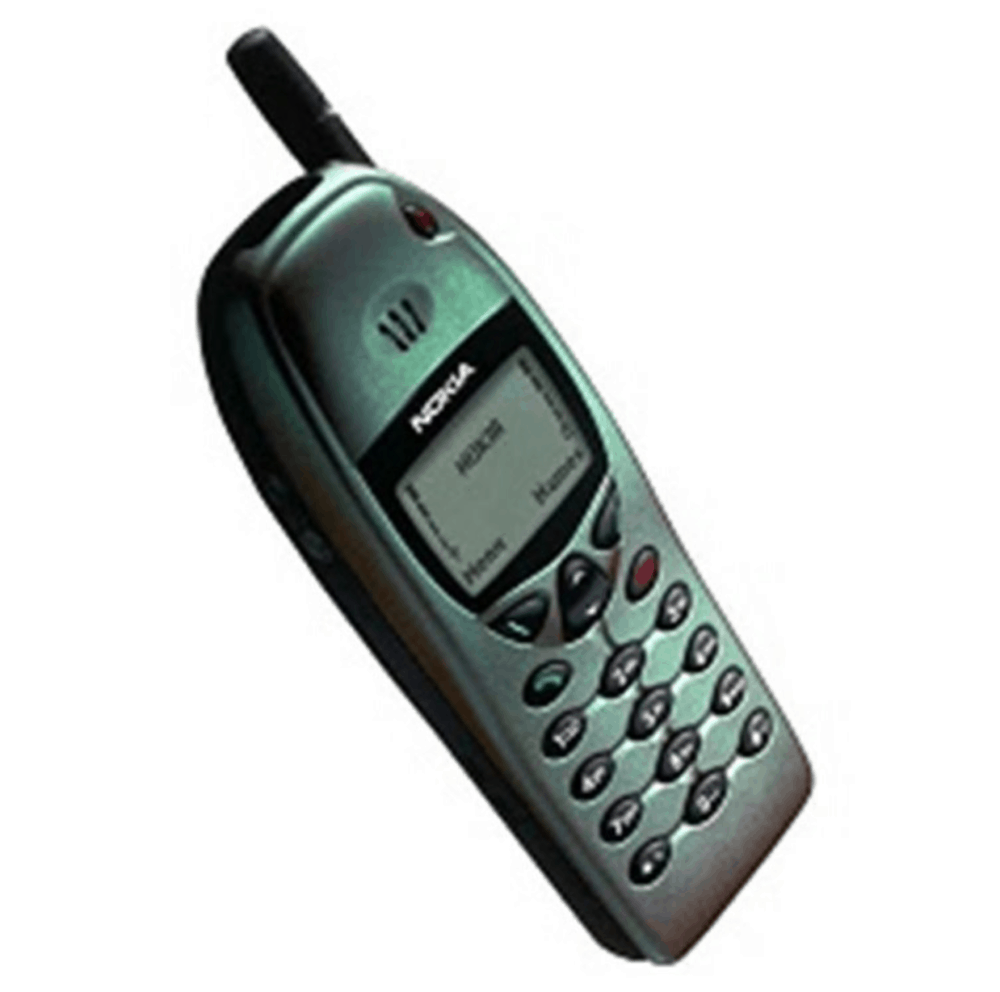
The Nokia 6110 was the first mobile phone to use an ARM processor and was just one of a long line of 6xxx series phones from the Finnish company.
The handset was targeted at the consumer market and featured things like improved call-quality and extended battery life. It was also the first phone with an advanced user interface, a feature that would soon become standard.
Nokia 6110 Features:
- Three games: Memory, Snake, Logic
- Calculator, clock and calendar
- Currency converter
- Works as a pager
- Profile settings
- 4 colours
1997 – Motorola StarTAC

Inspired by the communicator from Star Trek, this bad boy was the world’s first clamshell handset. Another first for Motorola.
1998 – Nokia 5110
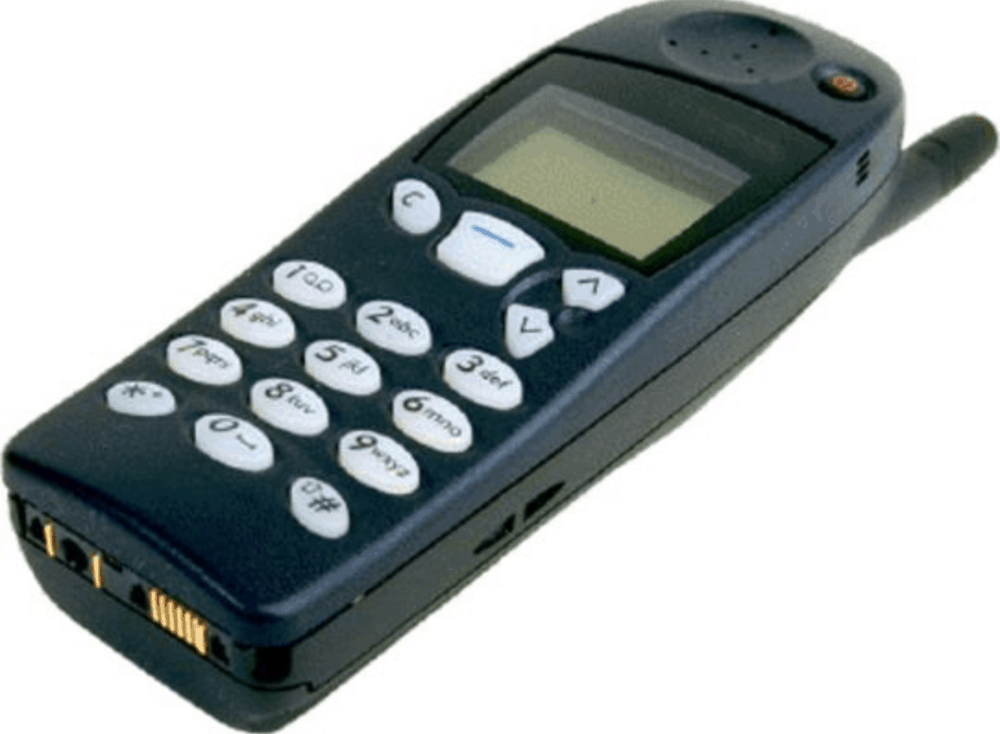
Excellent battery, slim by 1998’s standards, and it also featured Snake. What more could a 90s consumer want? Interestingly, this was the first mobile phone I ever owned. I think I was in year nine at school when it came out. At the time, pretty much everybody in my year at school had this device.
Nokia 5110 Features:
- Dimensions: 48 x 132 x 31 mm
- Battery: 900 mAh NiMH
- Display: 47 x 84 B/W
1998 – NOKIA 9110I
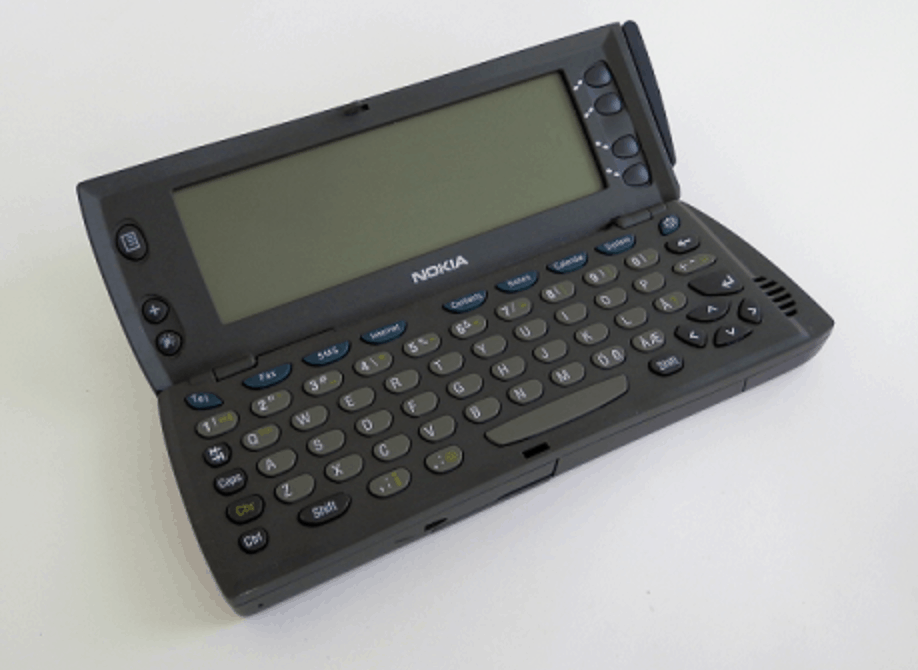
The Nokia 9210i was the successor model to the Nokia 9000 Communicator and it featured a TFT color display, a 32-bit ARM processor and the first instance of Symbian OS on a mobile phone.
The handset was used by Val Kilmer in 1997’s remake of The Saint, as well as Anthony Hopkins and Chris Rock in Bad Company.
1999 – BlackBerry 850
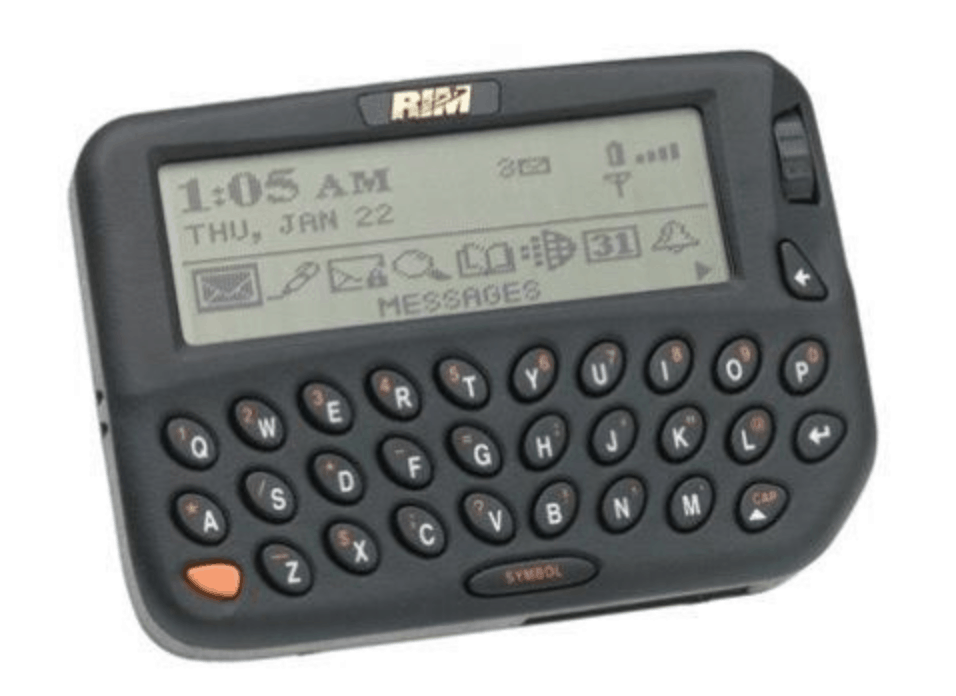
The BlackBerry 850 was the first handset released under the BlackBerry brand. Ten years later, RIM would be crowned the fastest-growing company on the planet. And we all know what happened post-2010 as Apple and Android arrived on the scene. BlackBerry’s fall from grace is perhaps the saddest thing I have witnessed in my years as a tech journalist. The company, once so influential, now doesn’t even make its own phones. Tragic, really…
2000 – Nokia 3310
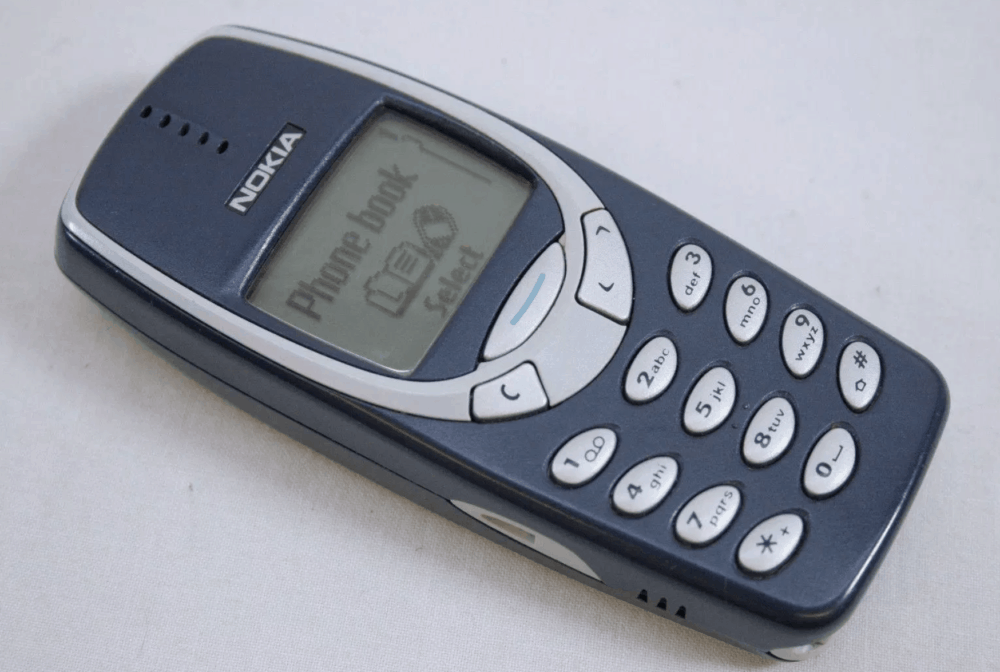
The phone that all of your mates had at school – if you went to school in the mid-to-late-90s, that is. Even in 2013, many regard the 3310 as one of the best mobile devices ever created. Some even say it’s indestructible.
2002 – Samsung SGH-T100
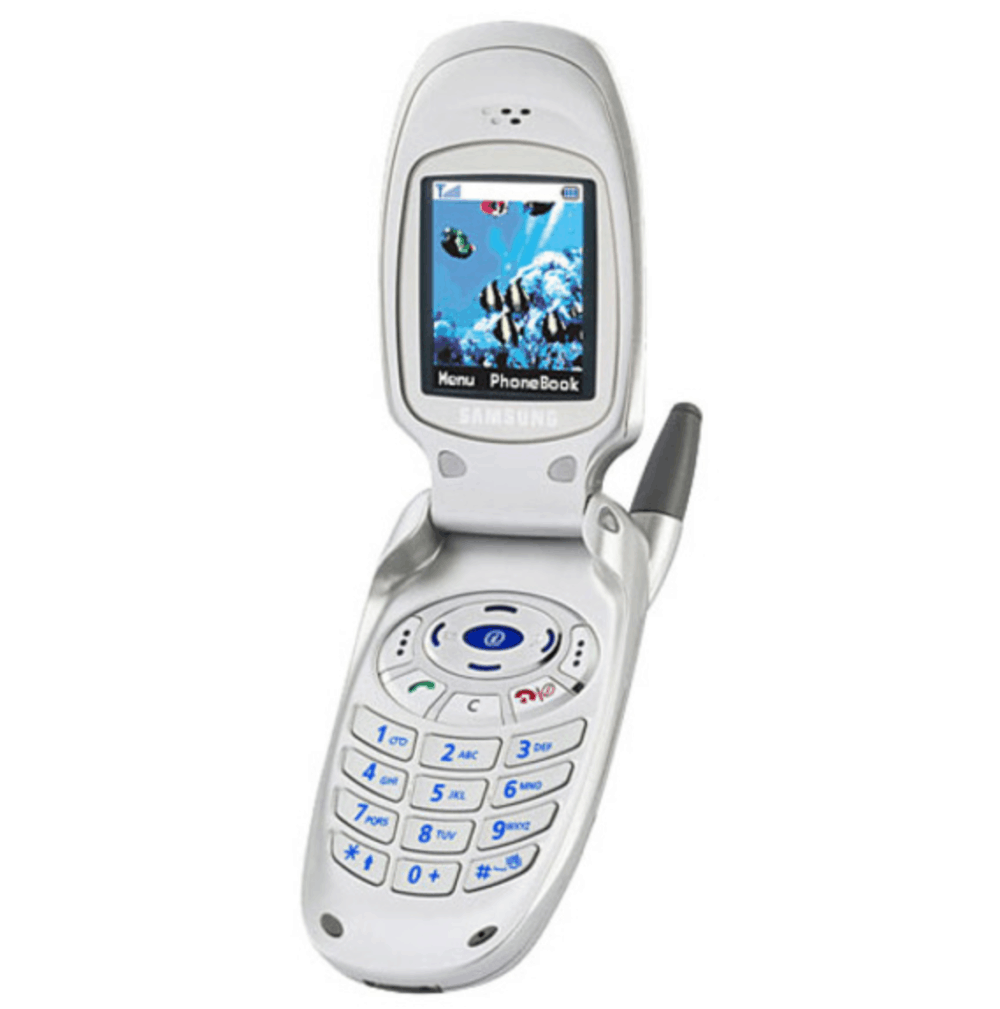
Before Samsung took over the world it made handsets like this, which was the first phone ever to use a thin-film transistor active-matrix LCD display.
2003 – BlackBerry 5810
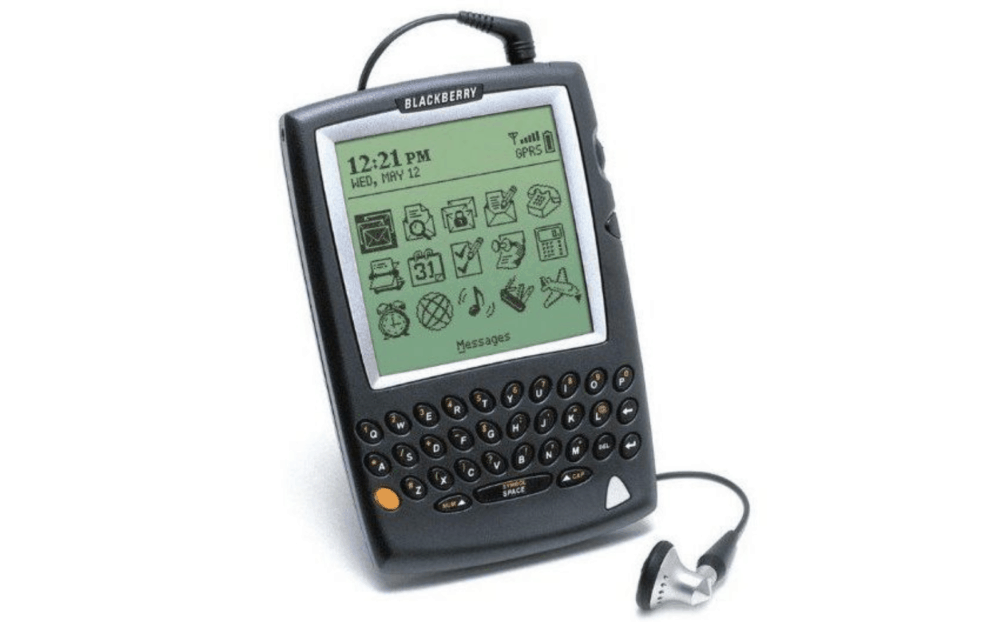
It didn’t have a built-in speaker so you had to plug headphones in to make phone calls, but the BlackBerry 5810 did have email and a QWERTY keyboard.
2003 – NOKIA 1100
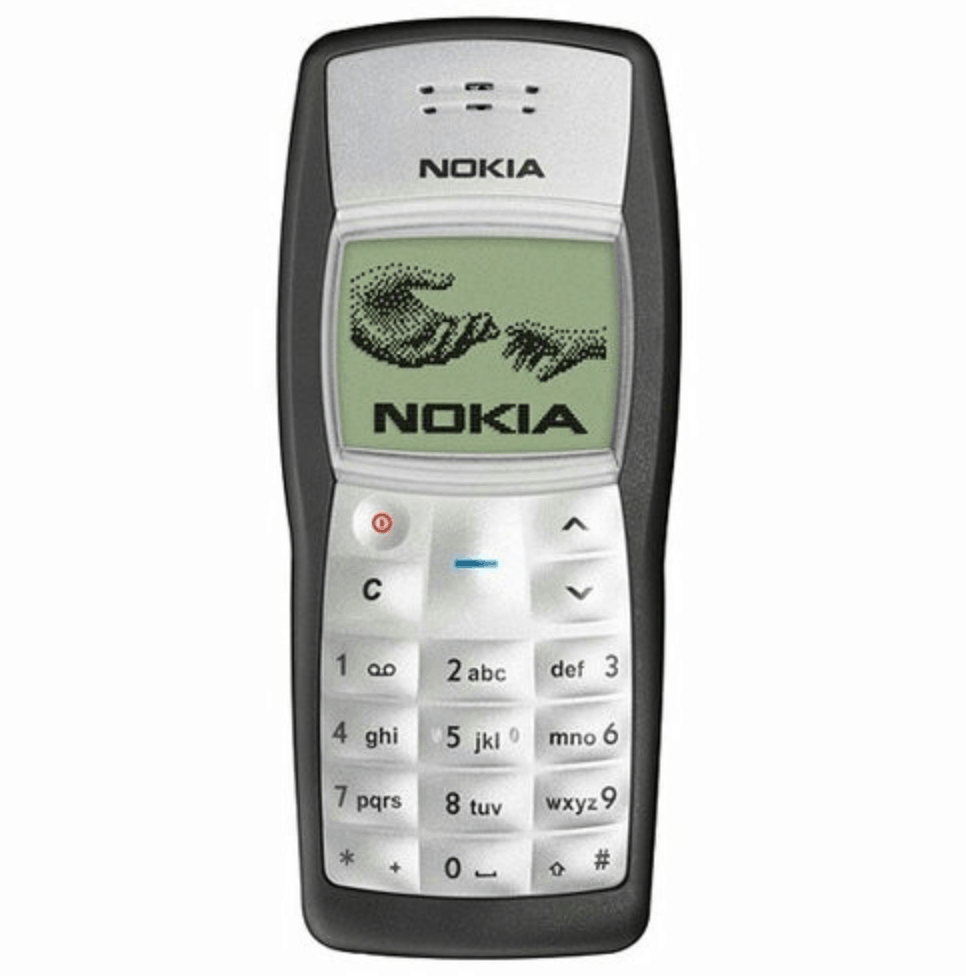
Over 250 MILLION Nokia 1100s were sold during its time on the market, making it one of the most successful phone releases of all time. Even by today’s standards.
The Nokia 1100 was designed to be basic; it didn’t feature a lot of the fancy stuff other Nokia phones had, and this made it very attractive to more basic users.
The Nokia 1100 was officially developed for emerging countries like Nigeria and India.
Nokia’s one billionth phone was sold in 2005, as a result of this handset’s release.
2003 – NOKIA N-GAGE
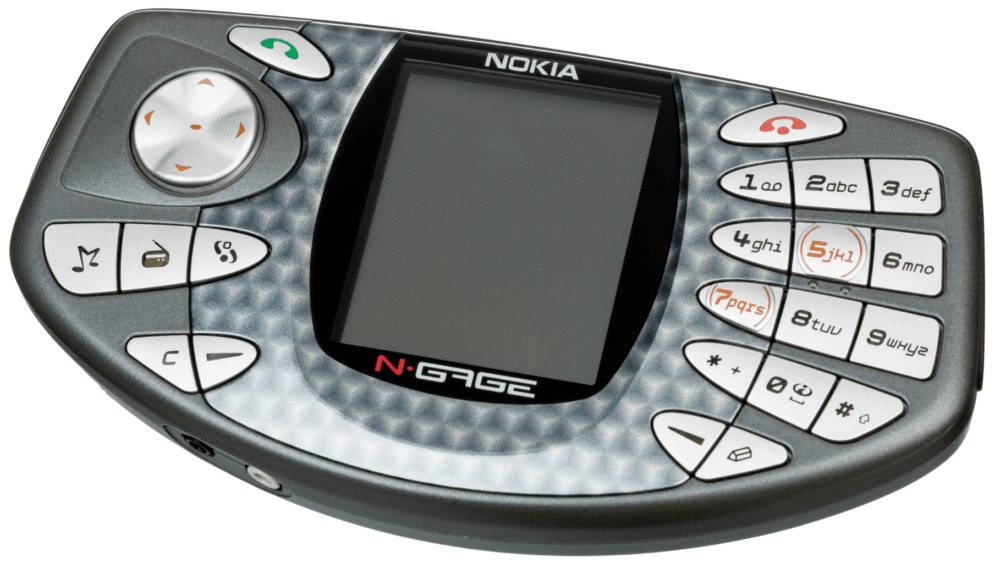
The Nokia N-GAGE was the first-ever “gaming phone”. It ran on Symbian and featured a rather unique design, whereby the keys were set out on the side of the display.
The phone was designed in an attempt to lure away gamers from Nintendo’s Game Boy Advanced. The handset also included support for apps and also MP3, making it a true smartphone in every sense of the word.
On sale between 2003 and 2005, Nokia sold about three million units of this device.
2003 – PALM ONE TREO 600
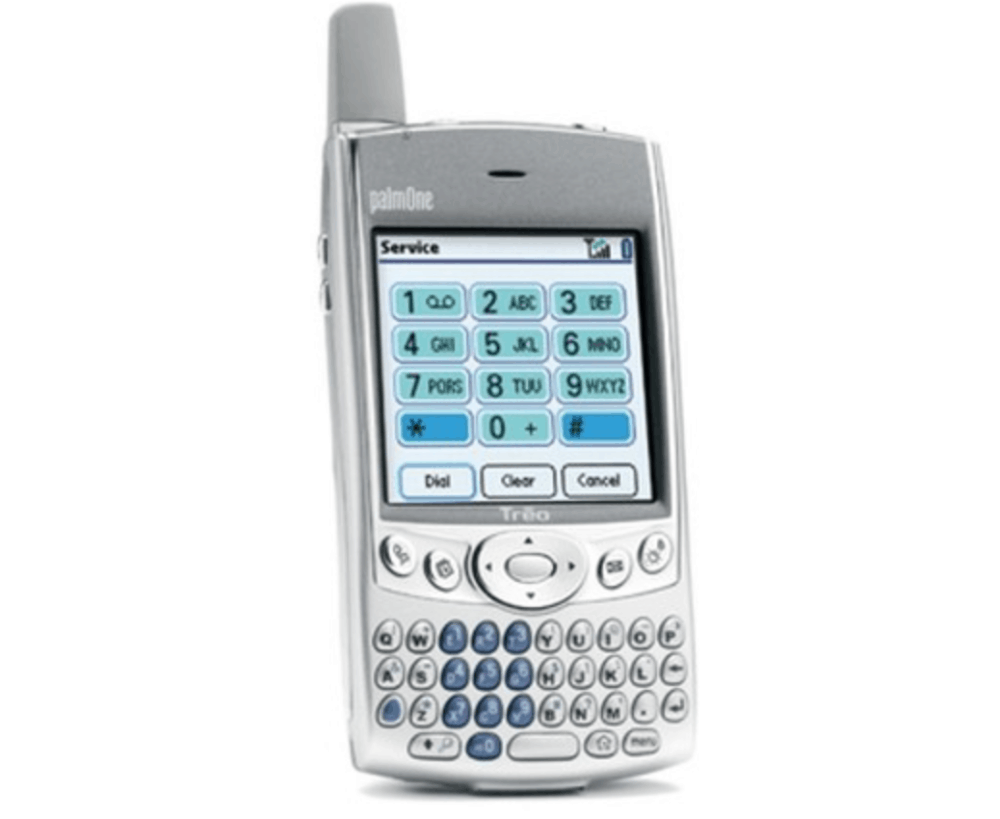
The TREO 600 was probably the world’s first smartphone, as it actually allowed for multi-tasking; you could check the calendar while making a call, for instance.
The result of this phone saw the formation of Palm as a company too, following the merger of Handspring and PalmOne into Palm Inc.
2004 – Motorola Razr V3
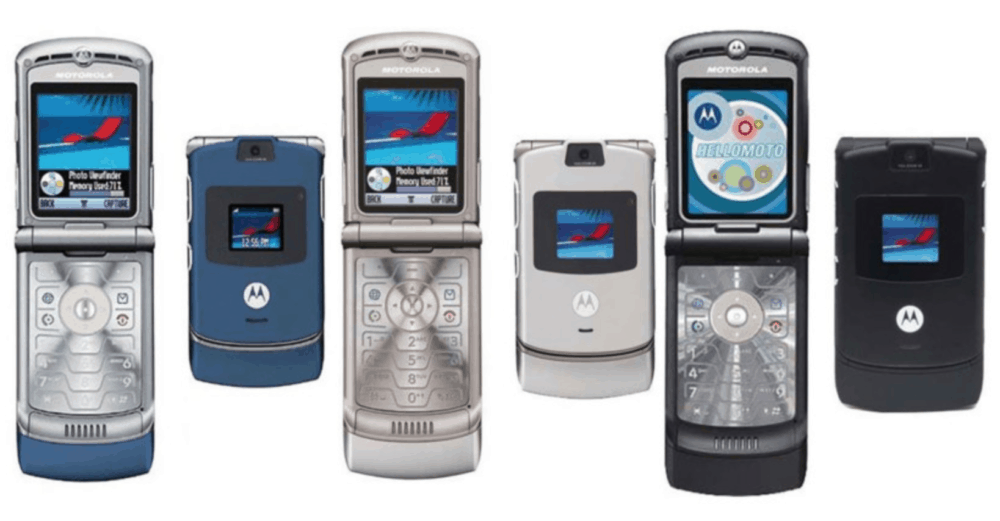
Motorola shifted over 130 million of its ‘fashion’ phone between the years 2004 and 2006, making it the best-selling clamshell handset in history.
2005 – BlackBerry 7270
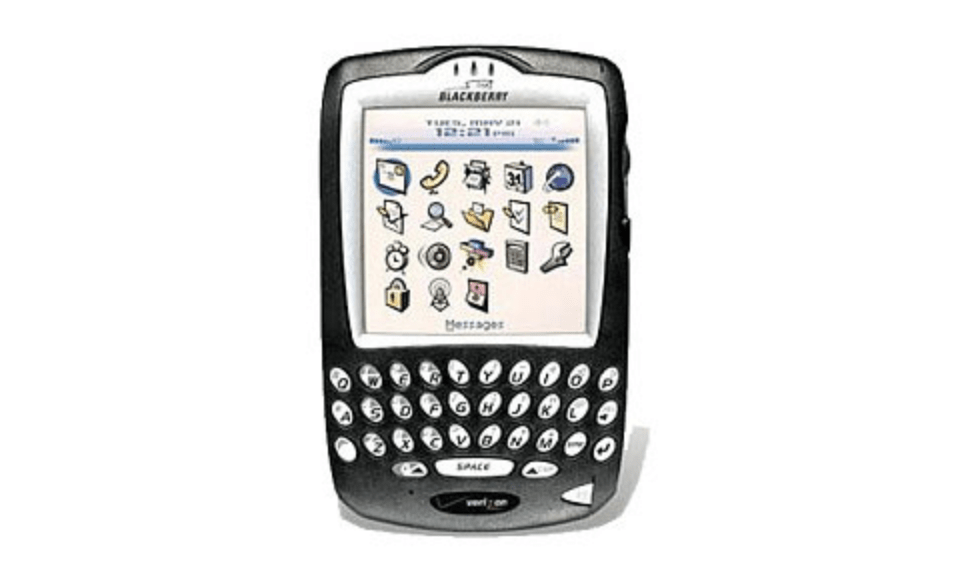
First BlackBerry handset to feature Wi-Fi, and one of the main reasons for widespread CrackBerry addiction.
Miss QWERTY phones? Check out the Titan Pocket!
2006 – Nokia N95
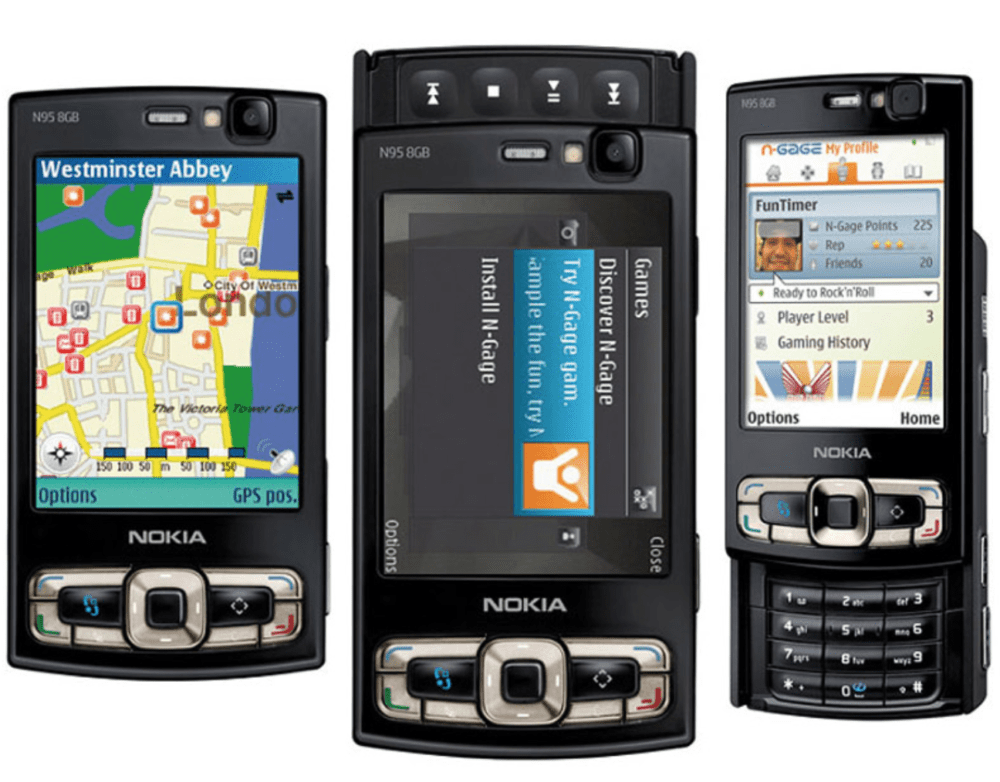
A true smartphone, one that ran on Symbian, packed in a 332MHz Texas Instruments CPU, and feature 160MB of RAM. It also featured a decent 5-megapixel camera, Bluetooth, and Wi-Fi. I had one of these while I was at university but, unfortunately, I ended up losing it at Glastonbury 2008.
2007 – LG Shine
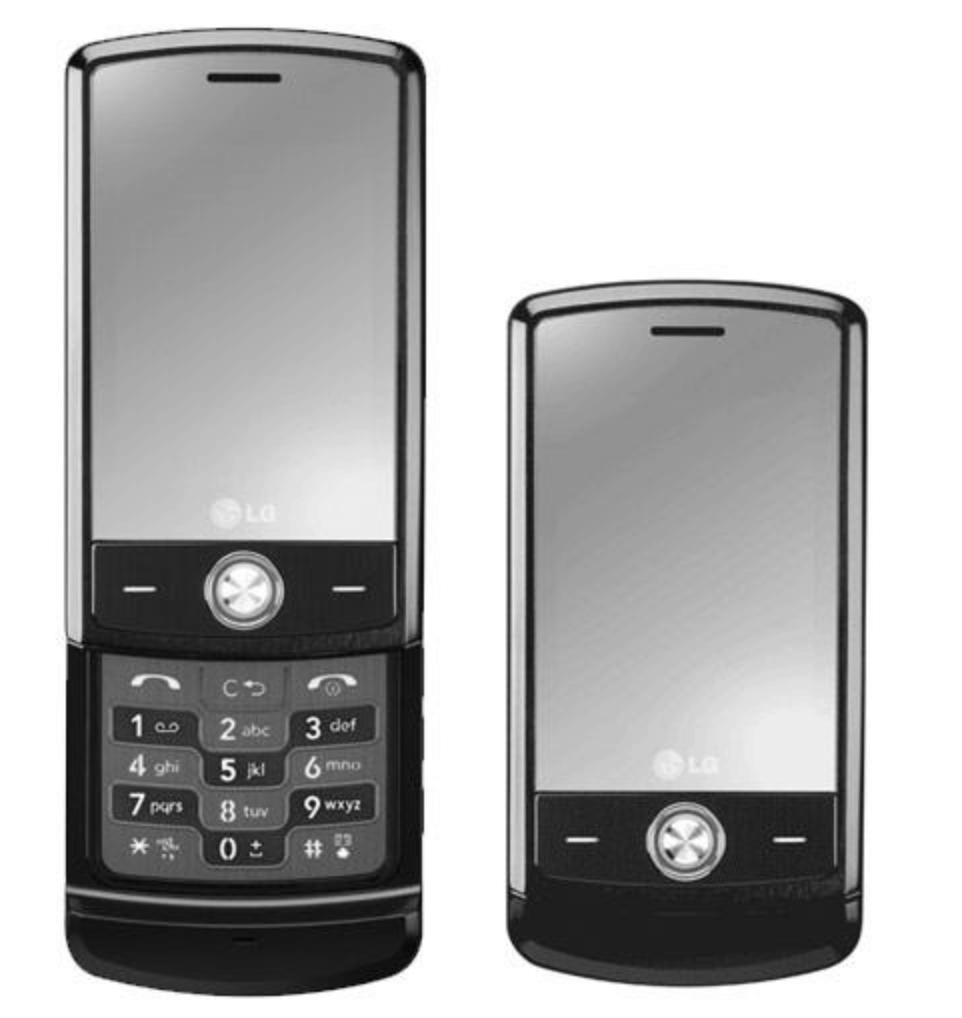
LG Shine Features:
- Dimensions: 99.8 x 50.6 x 13.8mm
- Weight: 118g
- Operating system: Java MIDP 2.0
- CPU: ARM9 115 MHz
- Memory: 50 MB Internal, microSD (TransFlash) external memory card slot
- Battery: 800mAh Li-Ion
- Display: 240 x 320, 2.2-inch Display 262K-color TFT LCD
- Camera: 2.0 megapixels + Autofocus
2008 – Apple iPhone 3G
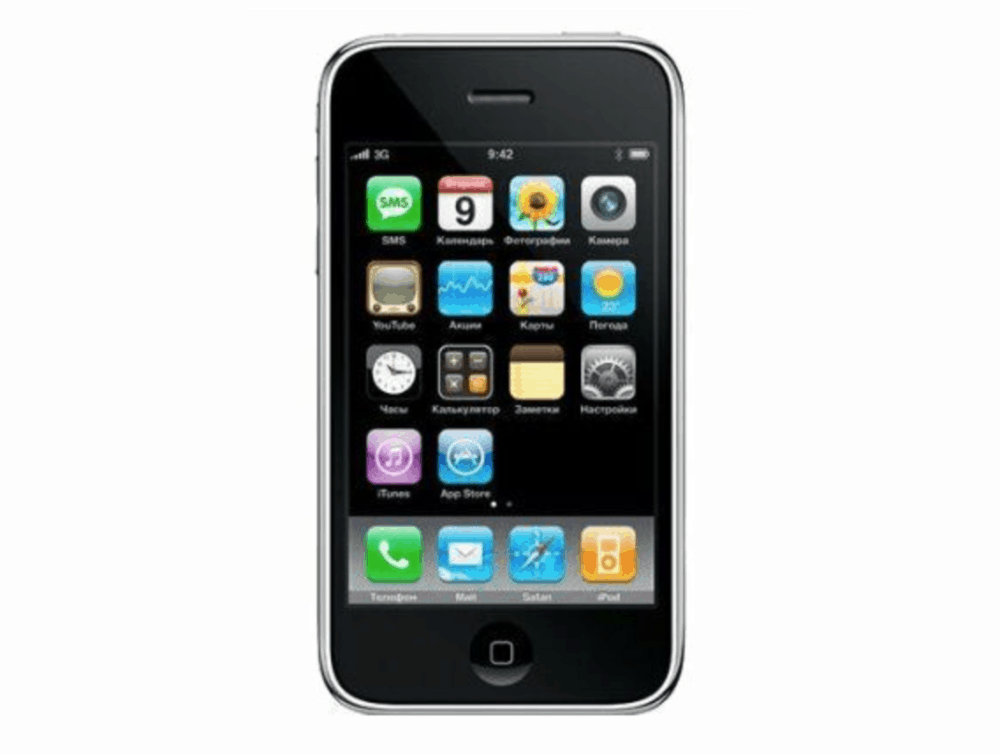
This one needs no introduction and is largely responsible for changing the face of the mobile space forever. Apple’s iPhone popularised applications with millions of consumers, helped make touchscreen interfaces the norm, and broke new ground for overall design and finish.
The iPhone 3G was the sharpest tip of the mobile stick, but from here on out things would begin progressing even faster.
2010 to 2021: The Android & iPhone Era
A lot of things happened in the phone market during 2010 and 2021. The first and most obvious thing was the rise of Google’s Android platform; it went from a relative newbie in 2009 to the world’s biggest mobile phone operating system by 2013, destroying the previously dominant operating systems in the form of Symbian, BlackBerry, and Windows.
Symbian kind of died a death in a relatively short period of time, a death that coincided with the death of Nokia. The two things were related too; Android and iPhones did things differently. People liked how they did things, so more and more people moved away from Symbian.
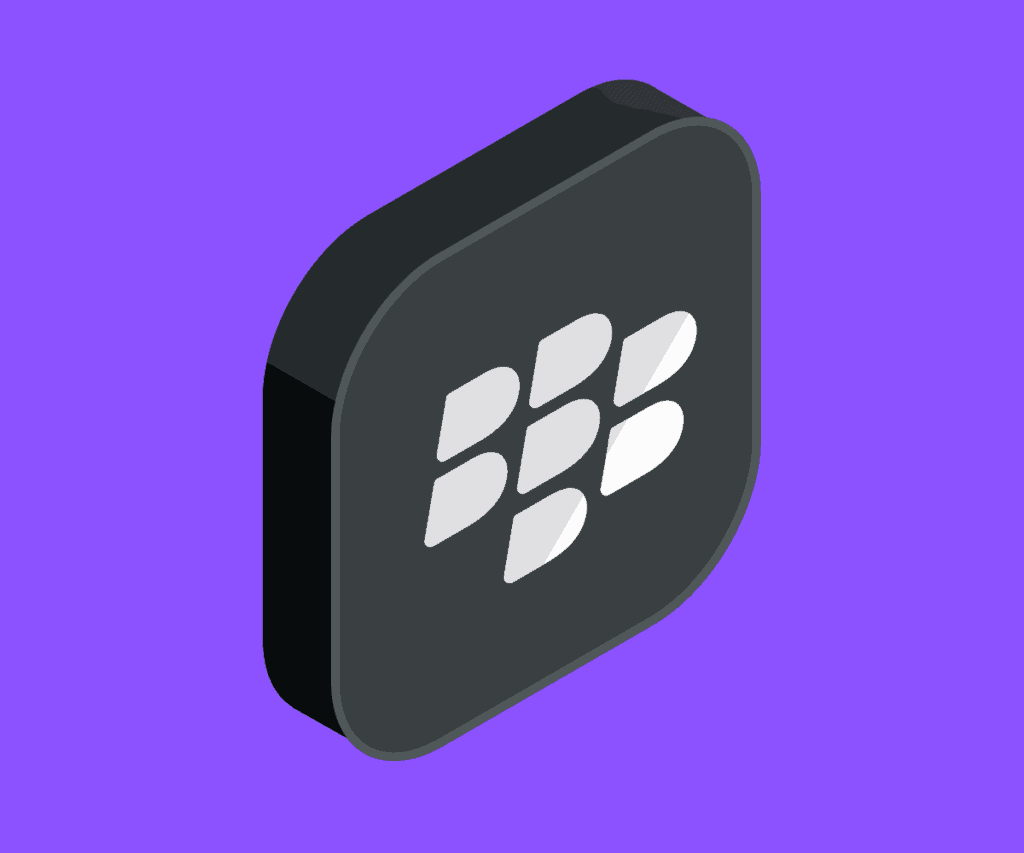
Nokia died. Then came BlackBerry’s slow and painful death. The company’s refusal to adapt to changing market conditions combined with people adjusting to new form factors for phones, as well as things like apps becoming a thing, killed BlackBerry’s market share within the space of a few years.
The company held on, pushed new phones out, but as more and more people migrated away from BBM to WhatsApp, and Apple’s iPhone grew in prominence, BlackBerry’s days as a player in the phone space were over. The company’s last-ditch attempt to revive its fortunes was a brand new operating, BlackBerry 10, which fell flat on its face.
BlackBerry eventually yielded to market demands and incorporated Android into its phones but by this point, it had zero appeal with consumers. People had moved on, either to Apple or Samsung. BlackBerry flailed around for a bit then called it quits, switching to a licensing deal for its brand which was first undertaken by TCL.
Onward Mobility now has the BlackBerry license and has claimed it will release the first 5G BlackBerry phone at some point during 2021.
We also lost a lot of other brands between 2010 and 2020. HTC died a pretty spectacular death, and so too did LG, one of the longest-standing phone brands in the Android ecosystem. Huawei grew rapidly, almost catching Apple and Samsung, but was eventually knee-capped by the US government, losing nearly all of its market share in the space of 24 months.
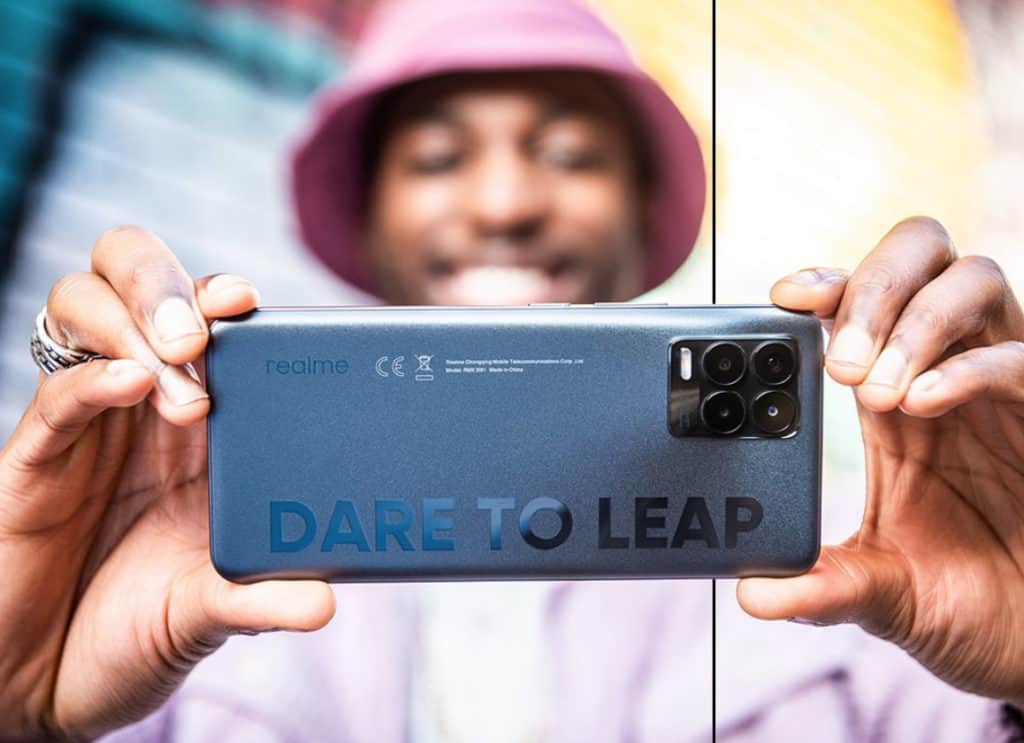
Apple and Samsung now dominate the phone space. But it is smaller brands like OPPO, Xiaomi, RealMe, and VIVO that are growing the fastest. And this means, by 2023 or 2023, the biggest phone brand on the planet will probably no longer be Samsung and Apple. It will be a Chinese phone brand. Most likely one owned by BBK, so either OPPO, VIVO, or RealMe.
I wonder how things will change between 2020 and 2030?
